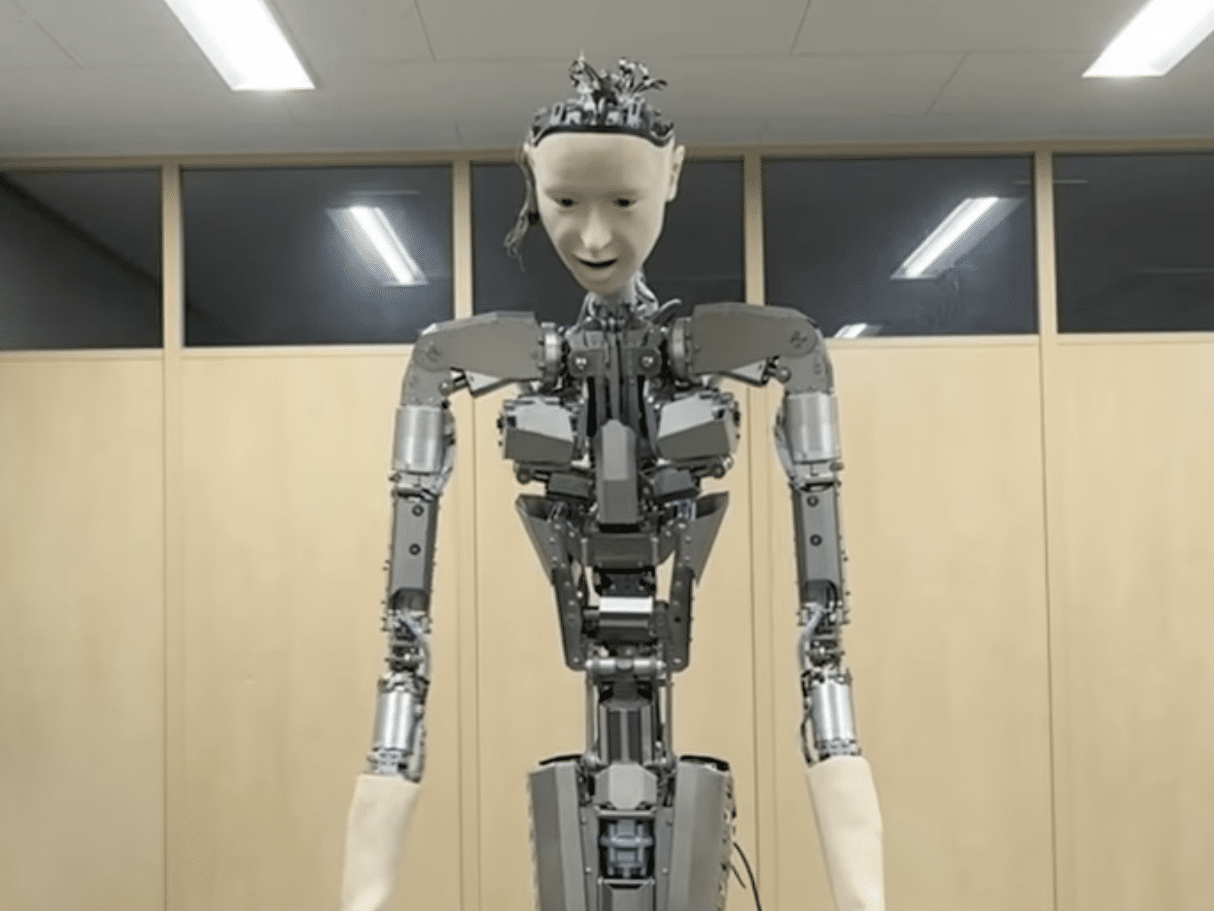Integrating GPT-4 enables spontaneous motion and emotional expression in robots
- GPT-4 is integrated into the humanoid robot Alter3, enabling it to generate spontaneous and complex motions.
- The robot can perform a variety of tasks and express emotions without explicit programming for each movement.
- User studies show that Alter3’s GPT-4-generated motions are significantly more natural and expressive than randomly generated movements.
From Text to Motion: The Birth of Alter3
The evolution of artificial intelligence has taken a significant leap with the integration of GPT-4 into the humanoid robot Alter3. This groundbreaking development allows the robot to generate spontaneous and complex motions based on text prompts, marking a significant advancement in the field of robotics.
The Integration Process
Traditionally, controlling a robot’s movements required explicit programming of each axis of motion, a tedious and time-consuming process. However, with GPT-4, the approach has shifted dramatically. By mapping linguistic expressions of human actions onto Alter3’s body, the robot can now perform a wide range of tasks and adopt various poses, such as taking a selfie or pretending to be a ghost, without the need for intricate manual programming.
Zero-Shot Learning Capabilities
One of the most impressive features of this integration is Alter3’s ability to perform zero-shot learning. This means that the robot can understand and execute new tasks immediately upon receiving verbal instructions, without prior training for those specific tasks. For example, a user can instruct Alter3 to “raise your arm a bit more when taking a selfie,” and the robot can adjust its motion accordingly, storing the improved motion code for future use.
User Studies and Evaluation
To evaluate the effectiveness of GPT-4 in generating motions, a series of user studies were conducted. Participants watched videos of nine different generated movements, categorized into instant gestures and actions over a period of time. These included everyday actions like drinking tea and more complex scenarios involving emotional expressions. The results were striking: motions generated by GPT-4 were rated significantly higher in terms of naturalness and expressiveness compared to control group movements generated randomly.
Implications and Future Directions
The integration of GPT-4 with Alter3 represents a significant advancement in the field of humanoid robotics. By combining verbal and non-verbal communication, the system enhances the potential for more nuanced and empathetic interactions between humans and robots. This could have far-reaching implications for various applications, from customer service to companionship for the elderly.
Moreover, the ability of GPT-4 to accurately map linguistic representations of movements onto a humanoid robot opens up new possibilities for the development of more advanced and capable robotic systems. As AI technology continues to evolve, the line between human and machine interactions will blur, leading to more intuitive and natural engagements.
The integration of GPT-4 into the humanoid robot Alter3 is a pioneering step towards creating more intelligent and empathetic machines. By enabling spontaneous motion and emotional expression, this development not only enhances the robot’s functionality but also paves the way for more meaningful human-robot interactions. As we continue to explore the potential of AI in robotics, the possibilities for innovation are boundless.
